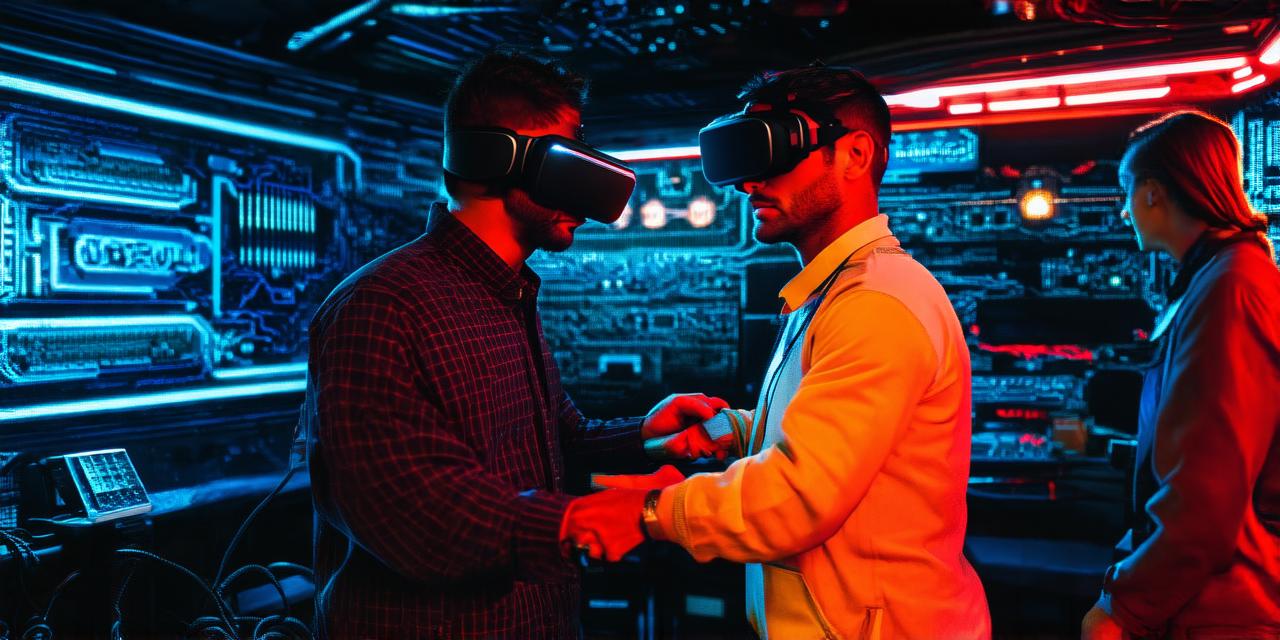<!DOCTYPE html>
The Early Days: Ivan Sutherland’s Sketchpad
Virtual Reality can be traced back to 1963 when Ivan Sutherland, an American computer scientist, developed a computer program called Sketchpad. Sketchpad was a simple program that allowed users to create 3D models and manipulate them using a light pen. While Sketchpad did not have the immersive capabilities of modern VR systems, it laid the groundwork for future developments in virtual reality.
Mid-Century Advancements: The Sword of Damocles
In 1968, Thomas Goldsmith Jr., and Estle Ray Mann developed the first head-mounted display (HMD) called the Sword of Damocles. The device was worn on the user’s head and projected a 3D image in front of them, creating an illusion of depth and space. Although the technology was primitive, it demonstrated that it was possible to create immersive virtual environments.
The 1980s: The Birth of VR Hardware
In 1982, the first commercial VR system, called the Marble Runner, was released by Computer Space. However, the system was not successful due to its high cost and limited technology. It wasn’t until 1985 when Ed Catmull, a computer scientist, developed the Z-Buffer algorithm that allowed for more realistic rendering of 3D objects in virtual environments.
The 1990s: The Dawn of VR Consumerism
In 1991, Sega released the first consumer VR system called the Virtual Reality System 2 (VRS-2). However, the technology was still limited and expensive, making it difficult to gain widespread adoption. It wasn’t until 1994 when Silicon Graphics Inc. (SGI) launched the CyberCabinet that consumer VR began to take off. The system featured a more advanced HMD and allowed for more interactive experiences.
The 2000s: The Rise of Mobile VR
With the advent of smartphones and mobile technology, VR became more accessible to the masses. In 2010, Oculus VR released the first commercial Android-powered VR headset called the Oculus Quest. The device was a game changer, allowing users to experience virtual reality on the go. Since then, numerous companies have developed their own mobile VR devices, including Samsung Gear VR and Google Cardboard.
The 2010s: The Emergence of High-End VR Systems
As technology advanced, high-end VR systems emerged, offering more immersive and realistic experiences. In 2016, Oculus VR released the Oculus Rift, a PC-powered VR headset that offered room-scale environments and advanced tracking technology. The same year, HTC launched the Vive Pro, which featured a higher resolution display and more advanced eye-tracking capabilities.
Today’s VR Landscape: Advancements in Technology and Applications
Virtual reality technology has come a long way since its early days, with advancements in hardware and software leading to more immersive and realistic experiences. Today, VR is used in various industries, including gaming, education, healthcare, and more. For example, medical professionals use VR to simulate surgeries and train new doctors, while educators use it to create virtual field trips and immersive learning environments.
The Future of VR: Continued Innovation and Expansion
As technology continues to advance, VR is likely to become even more integrated into our daily lives. We can expect to see continued innovation in hardware and software, leading to more immersive and realistic experiences. Additionally, as the cost of VR systems continues to decrease, we can expect to see more widespread adoption across various industries.
Summary
Virtual reality technology has come a long way since its inception, with advancements in hardware and software leading to more immersive and realistic experiences. From Ivan Sutherland’s Sketchpad to today’s high-end VR systems, the history of VR development is a fascinating tale of innovation and progress. As technology continues to evolve, we can expect to see continued expansion and integration of VR into various industries, leading to even more exciting possibilities for the future.
bekannten Sie schon, dass ich nicht lange auf das Detail eingehen werde.
